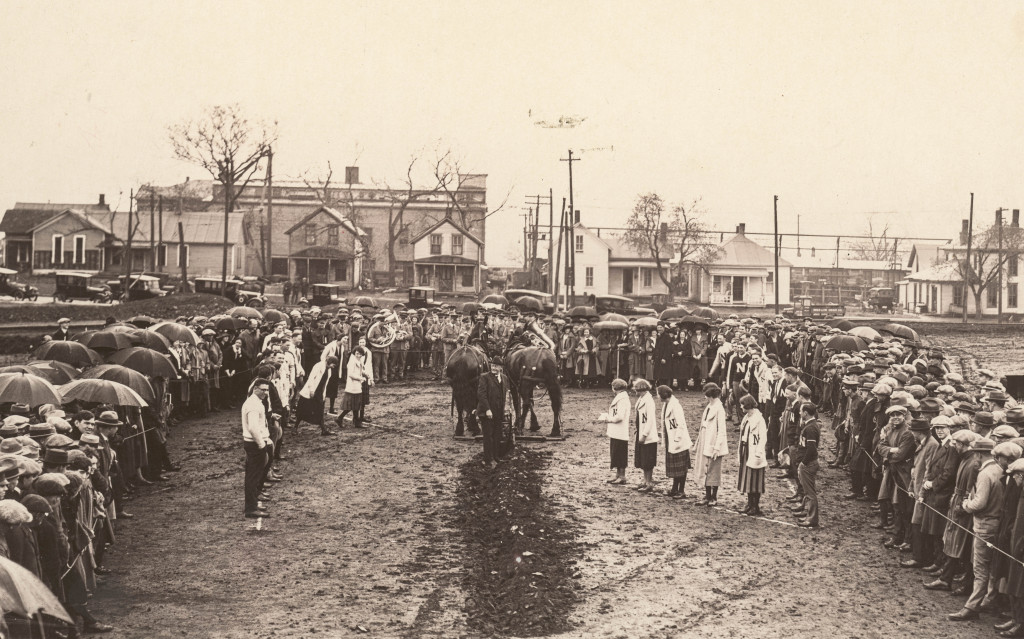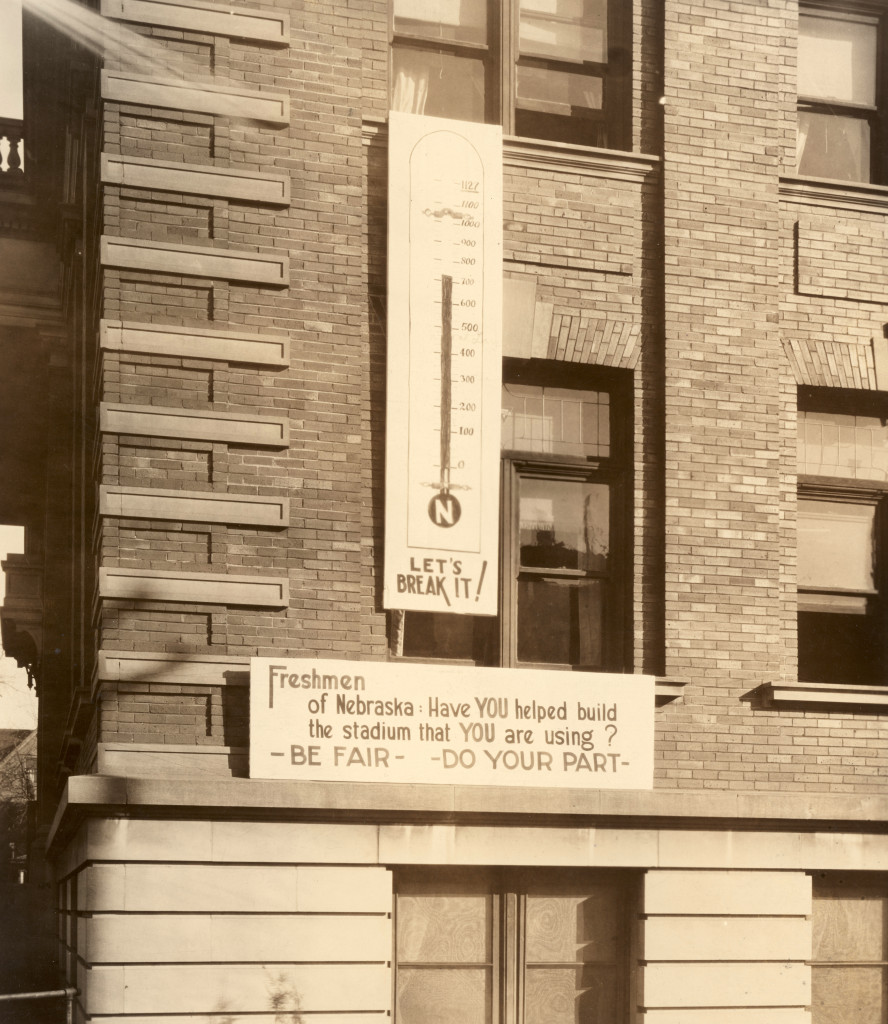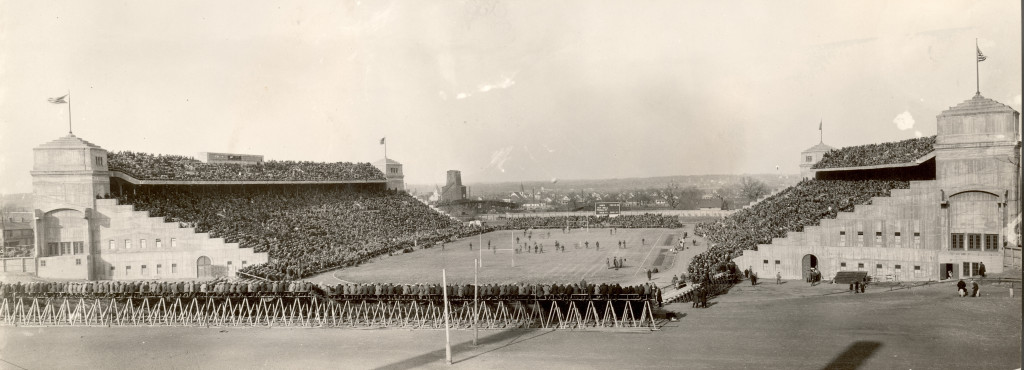
By David L. Bristow, History Nebraska
What’s the proper way to break ground for the new home of the Cornhuskers? With a team and a plow, of course!
University officials broke ground on Memorial Stadium on April 26, 1923. An estimated thousand people showed up to hear speeches and watch Chancellor Samuel Avery ceremonially plow a furrow.
There was a recent precedent for this. A year earlier, Governor Samuel McKelvie had plowed a furrow to break ground for the new state capitol.
Naturally, these groundbreaking ceremonies were publicity stunts, but they had a greater degree of authenticity than modern-day groundbreakings in which executives don shiny hardhats and turn over pre-dug dirt with golden shovels. Both McKelvie and Avery had actual farming experience. McKelvie was a farmer and cattleman who edited The Nebraska Farmer before serving as governor. Avery’s parents had farmed near Crete when he was growing up, and he was a professor of agricultural chemistry before becoming chancellor.

In the 1920s, driving a horse-drawn plow was a way of demonstrating that both the capitol and the football stadium were connected to lives of ordinary Nebraskans, and that the state’s leaders were proud of Nebraska’s agricultural identity.
The construction of Memorial Stadium was a risky move. The wooden bleachers of Nebraska Field were torn down to make way, but it was not clear that the new stadium would be finished in time for football season — or that fundraisers would bring in enough money to pay the contractors. They would have to do it without tax dollars.
Fundraising began in 1920 for a grand World War I memorial that was to include a museum, stadium and gymnasium. But the economy fell on hard times in the early 1920s. The legislature not only refused to fund the project, but cut the university’s operating budget. Meanwhile, opposition mounted across the state as local groups and American Legion chapters feared that fundraising for Lincoln would make it that much harder to build their own local war memorials.
The university scaled back its plans, dropping everything but the 30,000-seat stadium. As head of the university’s alumni association, a man named Harold Holtz led an aggressive fundraising drive that used high-pressure tactics on students, faculty, alumni and communities.
“On numerous occasions Holtz stated that none of the students had been coerced into pledging, but the peer pressure must have been tremendous,” writes Michelle Fagan in a 1998 issue of Nebraska History. She goes on to describe how Holtz and his team threatened and even sued people who didn’t fulfill their pledges.

Was the stadium finished in time for the first home game of the 1923 season? Close enough. Contractors warned that they would not be held responsible for injuries when the university opened the partly finished stadium on October 13, 1923. No fans were hurt amid the scaffolding — and a few even climbed atop the unfinished upper balcony — but the Oklahoma Sooners did not fare so well. The Sooners became the first team to lose a game at Memorial Stadium, falling to the Huskers 24-0.
Memorial Stadium was officially dedicated the following week, when Kansas played Nebraska to a 0-0 tie. Notre Dame was the first opponent to score in the new stadium, but one touchdown wasn’t enough for Coach Knute Rockne’s “Four Horsemen”-led team, which fell to the Huskers 14-7 on November 10.
Who was the first team to beat Nebraska in Memorial Stadium? It’s not easy to guess.
It was Syracuse. The Orangemen defeated the Huskers 7-0 on November 24, 1923, before an estimated crowd of 35,000.
Visit History Nebraska’s website at history.nebraska.gov.
